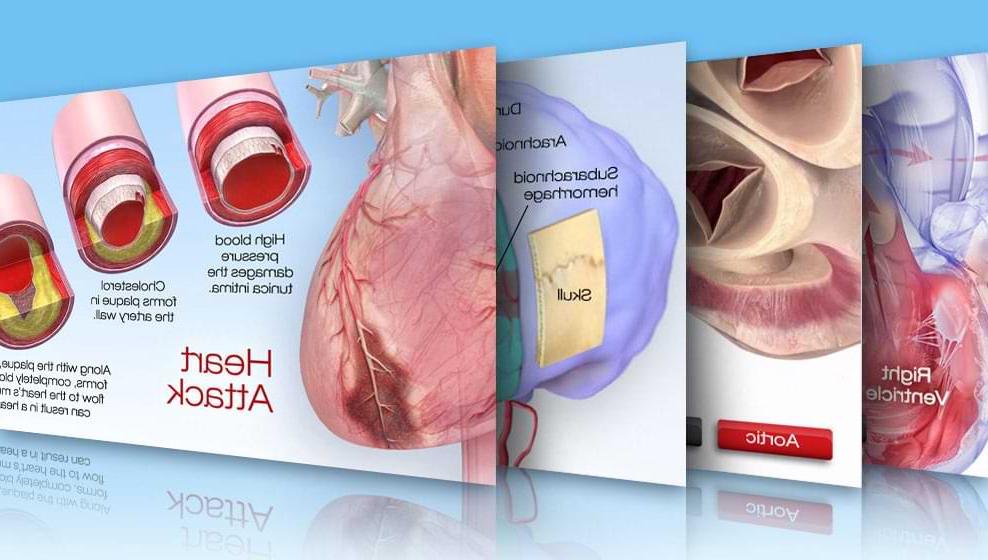你的主动脉:生命的脉搏
Understanding the aorta and its job in circulation
The aorta is the main artery that carries blood away from your heart to the rest of your body. The blood leaves the heart through the 主动脉瓣. 然后穿过主动脉, making a cane-shaped curve that gives rise to other major arteries that deliver oxygen-rich blood to the brain, 肌肉和其他细胞.
The aorta can be more than an inch wide in some places and has three layers:
- 内层(内膜)
- 中间层(介质)
- 外层(外膜)
当主动脉出现问题时, the heart and the entire body’s blood supply can be put at risk.
什么是主动脉瘤?

An aortic aneurysm is a weakened or bulging area on the wall of the aorta, which may occur anywhere along its length.
Aortic aneurysms can cause two problems:
- 破裂: The weakened or ballooned area may develop a hole, 叫做破裂, that allows blood to burst out into the body.
- 解剖: The blood pumped forcefully through the aorta can split the layers of the artery wall, allowing a buildup of blood to continually leak into the space, 哪个会进一步分裂动脉壁. This can lead to aortic rupture or decreased blood flow (ischemia) to organs.
What are the symptoms of an aortic emergency?
Some of the symptoms, such as chest pain and 下巴 pain, are generally associated with a heart attack. But sudden stabbing pain in the neck, 下巴, 腹部, 胸部或肩部, 晕倒, difficulty breathing and sometimes even sudden weakness may also be symptoms of an aortic event. Because the aorta travels from above the heart to below the navel, severe pain may occur at any place along this major vessel. Additional symptoms of a rupture may include clammy skin, nausea and vomiting or shock.
Aneurysms and dissections of the aorta are life-threatening medical emergencies.
How is an aortic aneurysm or dissection treated?
The two main treatment options are surgery and/or medications.
- 手术 repairs or replaces the injured section of the aorta.
- 药物治疗 lowers blood pressure and reduces risks of rupture. 药物治疗s wouldn't be a treatment option in an emergency, but they may be appropriate if your health care professional recommends them.
Risk factors for aortic aneurysm and dissection
除了男性, advanced age and genetics or family history, people who have the following conditions may be at higher risk for an aortic aneurysm or dissection:
- 高血压. The increased force of blood can weaken the artery walls.
- 遗传疾病, such as Marfan syndrome, decrease the body’s ability to make healthy connective tissue.
- 高胆固醇 or 动脉粥样硬化. A buildup of plaque may cause increased inflammation in and around the aorta and other blood vessels.
- 动脉发炎. 某些疾病和状况, 比如血管炎, can cause the body’s blood vessels to become inflamed.
- 创伤,比如车祸.
- 吸烟. People with a history of smoking make up 75% of abdominal aortic aneurysms.
- 不良的饮食习惯. Diets high in fat and sugar have been associated with increased risk for aortic aneurysms.
- 缺乏定期锻炼. Physical activity can help reduce blood pressure, and high blood pressure is a risk factor for abdominal aortic aneurysms.
筛选:美国.S. Preventive Services Task Force recommends that men ages 65-75 who have ever smoked get an ultrasound screening for abdominal aortic aneurysms, 即使他们没有任何症状.
People living with aortic disease or other heart-related conditions can improve their odds of living a longer and healthier life. 重要的是:
- 立即报告任何症状.
- 定期检查.
- Always take care of your heart health.





